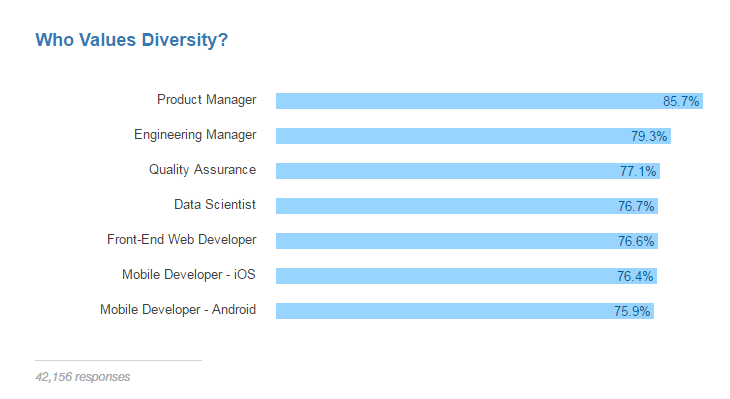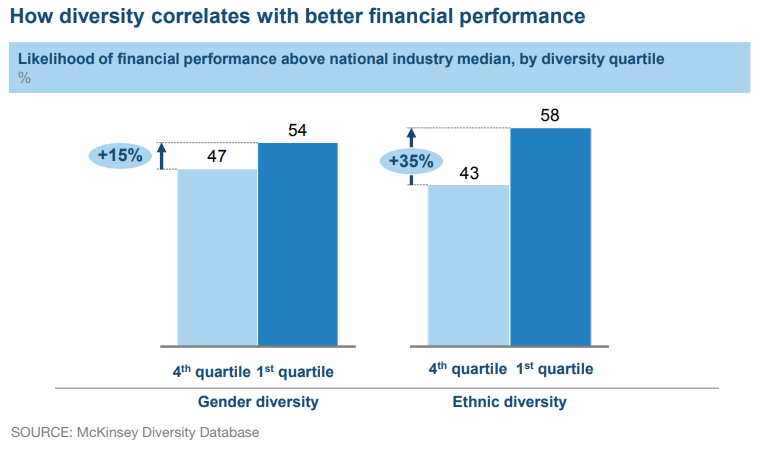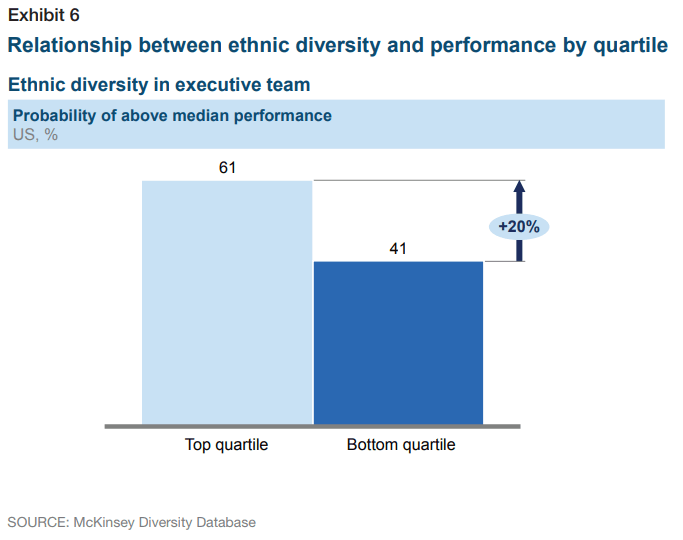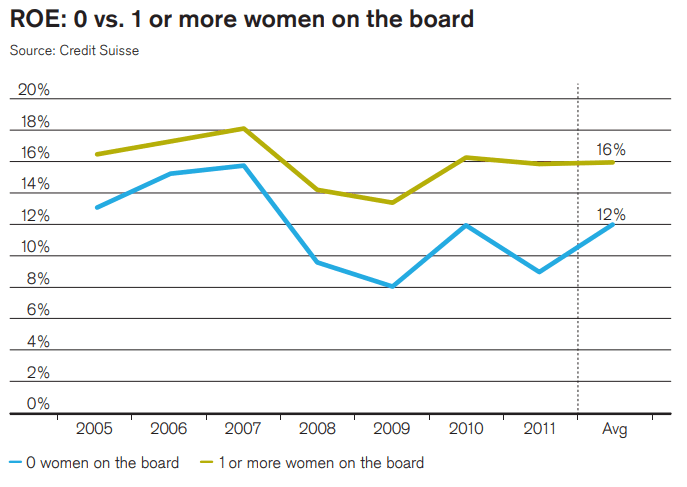
Why diversity in tech is important

Some commentators in Silicon Valley think that diversity in tech is no longer an issue. But here we are sitting in 2018. The tech industry diversity statistics show the industry is overwhelmingly white and male.
Your views may not be as extreme as the Google diversity emailer. Still, you may believe that everything is working as it should. Meritocracy means the best people should get the best positions regardless of their background. Hasn’t that approach built the best tech products, teams, and companies?
As it turns out, the data does not support this position. Diversity in tech still matters. Paying attention to this fact can bring numerous benefits.
1. Diversity in tech statistics
Atlassian, the maker of cool and powerful tools like Jira did a survey this year of the State of Diversity and Inclusion in U.S. Tech. The biggest finding to stand out is that most people in the industry think that diversity in tech is important.
80% of the respondents think that diversity and inclusion are important to the tech industry.
 Image source: State of Diversity and Inclusion in U.S. Tech
Image source: State of Diversity and Inclusion in U.S. Tech
Diversity is not an abstract concept that people vaguely support on an industry-wide level.
- 77% of the respondents think that diversity and inclusion are important to my company
- 85% think that diversity and inclusion are important to employees at my company
- 71% think that diversity and inclusion are important to executives at their company
Stack Overflow’s developer survey gets even more granular. According to their developer survey, 85.7% of product managers value diversity in tech. Also, engineering managers, quality assurance developers, and data scientists believe in the value of diversity.
 Image source: Stack Overflow via DevSkiller
Image source: Stack Overflow via DevSkiller
Concrete action on diversity in tech is less common than belief in it. Still, the Atlassian study found that,
- 63% of Silicon Valley companies have diversity hiring initiatives
- 60% focus on team diversity and inclusion
What is clear is that whatever your position, you can’t ignore diversity in tech. Does that mean that the tech industry paints a rosy picture when it comes to diversity? As it turns out, no.
2. Silicon Valley doesn’t think their own diversity initiatives are working
Only a very small proportion of the respondents to the Atlassian survey gave Silicon Valley an A grade when it comes to diversity in tech. But they are more positive about diversity in tech closer to their own experience. 34% think that diversity initiatives are working for their company. A full 38% think that these initiatives work in their primary team. That still leaves almost two-thirds of the respondents who think that their team’s diversity initiatives don’t work.
![]() Image source: State of Diversity and Inclusion in U.S. Tech
Image source: State of Diversity and Inclusion in U.S. Tech
Of course, the question working behind this is whether they’re necessary at all. The Atlassian survey finds that under half of the respondents thought that they didn’t need any improvement for age (47%), gender (41%), and race & ethnicity (42%). Slightly more than half thought that there didn’t need to be any improvement for sexual orientation (53%).
![]() Image source: State of Diversity and Inclusion in U.S. Tech
Image source: State of Diversity and Inclusion in U.S. Tech
In other words, the industry thinks that what they’re doing isn’t working. So why could this be?
3. Diversity in tech is being misrepresented and needs to be refined
Diversity is a complex issue that requires a lot of energy and resources to address. This can lead to a phenomena Atlassian calls diversity fatigue. It can be difficult to come up with solutions for diversity in tech when progress is slow or non-existent. The breadth of issues that need to be dealt with in the diversity conversation can often seem too complex. They appear to be more than any one individual can tackle. This can lead to paralysis and inaction.
Another issue is that the conversation is often wrong. A lot of Silicon Valley diversity and inclusion programs focus only on hiring people who fit a diverse profile. This can run the risk of creating a situation called tokenism. Tokenism is where companies hire candidates only for their personal background. They end up ignoring the candidate’s professional background. Studies show that this can actually have a negative outcome on the diversity candidates themselves. It can lead to lower performance since the employees feel they are only there to meet a diversity quota.
There is a better way to organically attract diverse candidates. It is to focus on promoting diversity and inclusion throughout the company. This means focusing on more than the hiring funnel.
Silicon Valley workers say that they would rather see a handful of skilled diverse candidates come together to influence the course of a company. This is better than a wave of diversity hires in low-level positions who serve the function of hitting a target.
But the complexity of the issue shouldn’t discourage companies from investing in diversity in tech. The benefits of doing so are numerous.
4. Diversity leads to better financial performance
The study Why Diversity Matters by McKinsey found that diverse companies perform better. This is true over a few different objective criteria. When contrasting financial performance, the most gender-diverse companies perform 15% better on average. The most ethnically diverse companies perform 35% better on average.
 Image source: Why Diversity Matters
Image source: Why Diversity Matters
The diversity effect is also seen at the management level. The most ethnically diverse executive teams perform 20% better than their non-diverse counterparts.
 Image source: Why Diversity Matters
Image source: Why Diversity Matters
This effect is noticeable when companies include women more. According to Credit Suisse, companies with one or more women on their boards get a 4% better return on investment. This is over companies with no women on their board.
 Image source: Gender diversity and corporate performance
Image source: Gender diversity and corporate performance
The simple truth is that tech companies that have a diverse workforce and executive team perform better on the market. So why is that? Well, there’re a few reasons.
5. Looking for diverse candidates helps you get the best talent
Right now, the US economy is booming and unemployment has reached record lows.
 Image source: Bureau of Labor Statistics via Google
Image source: Bureau of Labor Statistics via Google
But 40% of companies are facing skills shortages. These are the top reason for vacancies in entry-level jobs. Simply put, you need to look outside of your traditional sources to get the best developers. Don’t only rely on employee referrals. Instead, look at sources that you might not have considered. These can include associations for minority groups in tech.
Your competition draws on the same talent pools everybody else does. You will be accessing untapped labor markets. This will give you access to the best people.
With a diverse workforce comes better engagement.
6. Diversity in tech increases employee engagement
Employee engagement is a huge issue. A Gallup poll found that only 13% of employees are actively engaged at work. But there is amanagement behavior which is most likely to affect engagement. That is demonstrating a strong commitment to diversity.
So why is engagement important? It invests people in your company in what you’re doing. Companies with the best engagement levels see:
- 10% higher customer metrics
- 17% higher productivity
- 20% higher sales
- 21% higher profitability
- 41% lower absenteeism
- 24% lower turnover and high turnover organizations
- 59% lower turnover and low turnover organizations
- 28% less shrinkage
- 40% fewer quality issues
 Image source: State of the Global Workplace
Image source: State of the Global Workplace
In other words, engagement can have a major effect on your bottom line. Diversity is one of the best ways to improve it. Engagement from diversity also helps in other ways.
7. You can retain your best employees with a diverse workplace
Engagement can make a huge dent in employee turnover. It also helps improve retention. This is particularly true with people who do not match the profile of the majority. According to the Atlassian study, less than 30% of the underrepresented groups in Silicon Valley have representation, retention, or a sense of belonging.
Engagement is one of the most important factors employees consider. This is especially true when deciding whether to leave for a new company. Once you have an amazing employee, diversity in your organization is very important. It is one of the best ways to make sure they stay with you instead of going somewhere else. The cool thing is that the engagement gained from diversity in tech has a knock on effect. It improves employee satisfaction
8. Your developers are more satisfied in a diverse environment
Employee satisfaction can make a big difference in engagement. But satisfaction doesn’t work on the linear scale. How diverse the environment is around you affects your satisfaction. This is particularly true for minority groups.
McKinsey found when a huge boost to satisfaction kicks in. It happens when the employee’s peers make up more than 15% of the workforce. This means that you shouldn’t make a token effort to show that you have a few non-traditional employees. Instead, diversity should be an important factor at all levels of the organization. This will contribute to generally keeping the best people satisfied with their job.
But the thing is that diversity in tech doesn’t only help minority workers. It helps everyone do better.
9. Diverse teams do better work
 Image credit: sps universal on Unsplash
Image credit: sps universal on Unsplash
Software development is a highly collaborative process. Decisions are rarely made alone. Part of what makes someone a great developer is their ability to work with a team. But an interesting thing happens with diverse teams.
Katherine Philips from Columbia Business school found that members of diverse teams do more preparation for an exercise. This is only true if they know they are going to work with a diverse team. A diverse group is more likely to generate the correct answer to a problem than a homogeneous group will. By having a diverse set of teammates, everybody, including members of the majority, do a better job. When the team works well, you build a better product.
10. Diverse teams build better products
Diverse teams strengthen your company’s customer orientation. Your customers come from all over the world. They bring with them many different prospectives. Teams who reflect the composition of a company’s customers stand out. This could be through gender, ethnicity, culture, sexual orientation, or age. They are in a much better position to understand what changes need to be made to improve the product.
This is important in tech because companies produce the best products when they are innovative. Diversity can help with that as well.
11. Better innovation and productivity
Diverse teams, particularly in the tech space, work better. A study of gender diversity on technical work teams found that diverse teams adhere to project schedules better. They also have lower project costs. Individual employees have higher performance ratings. In the end, bonuses work out to be higher.
Diverse teams make more with less. And part of this is down to creativity.
12. Diversity makes your team more creative
There’s a cognitive bias called fluency heuristic. People think ideas they are comfortable with are, truer, more beautiful, or generally better. The opposite is true about things they are uncomfortable with. This cognitive bias can affect your tech team’s creativity. They end up favoring what they’ve already done what they could do to fix a problem. Diverse team members bring new prospectives.
New people will have the same issue with fluency heuristic. Still, the norms they are comfortable with will be different. This corrective action will lead to more creative outcomes. These are incredibly important when dealing with software developers. After all, they need to come up with interesting ways to solve problems.
As Paul Block, CEO of US sweetener manufacturer Merisant, commented,
People with different lifestyles and different backgrounds challenge each other more. Diversity creates dissent, and you need that. Without it, you’re not going to get any deep inquiry or breakthroughs.
And with better creativity comes better decision-making.
13. Diversity contributes to better decision-making
Diverse teams are more creative, innovative, and work better together. This means they also make better decisions. A report found that a greater proportion of women on an otherwise male team is associated with higher collective intelligence. The researchers define this as the ability of a group to perform a wide variety of tasks. These teams were most likely to experiment be creative and share knowledge.
When companies implement diversity at a leadership level, McKinsey contends a phenomenon called acquire diversity takes hold. The personal experience of the leader breaks down the insularity of the company. This makes the organization more likely to act inclusively. It also fosters a communicative culture. Most importantly, it creates an environment where people can express unorthodox views. They’re also more likely to have more information to make better decisions.
And this can help because when diversity isn’t considered, tech companies miss opportunities, even at the highest levels.
14. Financiers who pay attention to diversity in tech gain access to untapped opportunities
A study of Swedish venture capitalist had an interesting outcome. On average, the female entrepreneurs they awarded money to got only a quarter of what they applied for. Their male counterparts received a bit over half of what they ask for.
The VCs were more comfortable funding men like them rather than women. This is a bad idea. Companies that go from 0 to 30% female representation on their leadership boards see a 15% increase in net revenue.
The tech industry is heavily financed using the Venture Capital model. By ignoring their biases towards the majority they don’t invest in the best talent. A venture capitalist who accepts their biases can find opportunities that others don’t have access to.
Diversity still matters in tech in 2018
Diversity in tech isn’t merely a passing fad. It’s still a big issue that Silicon Valley needs to deal with. There are numerous advantages to embracing a diverse workforce. These range from the quality of product that you produced to the people you’re able to attract. Additionally, it can include the money that you’re able to make. While there’s no silver bullet to solving a very complex process, it’s important to consider diversity. It’s a real thing that could give you many benefits if you pay attention to it.
Image source: Pexels




